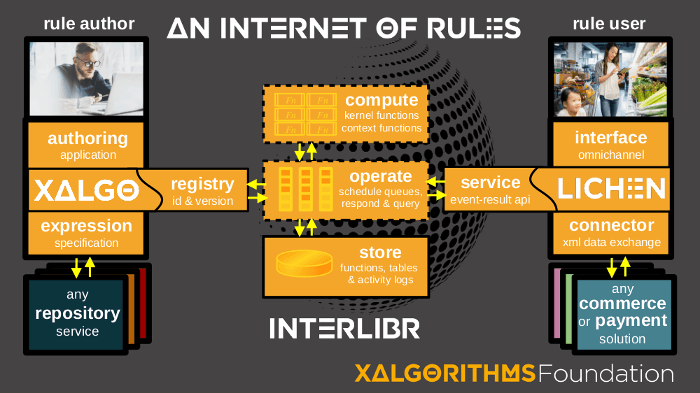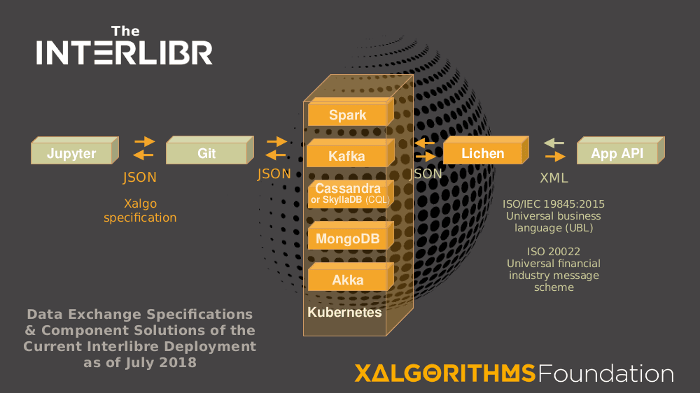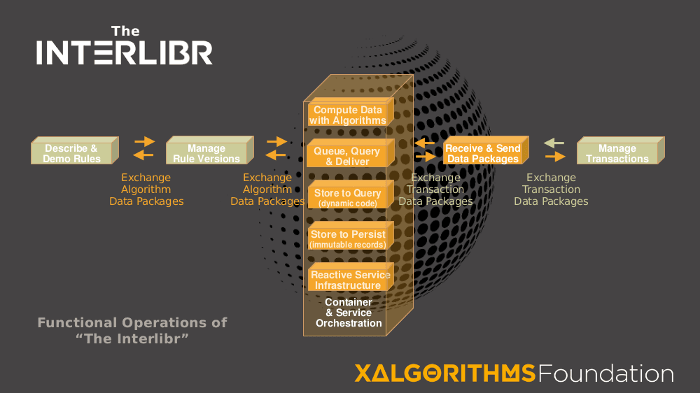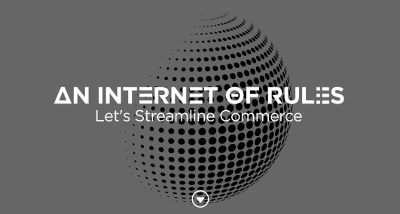The Emergence of an Internet of Rules
- Xalgo is a high-level domain-specific rule expression language specification; XalgoAuthor is a development environment tailored to rule expression and management.
- Lichen exchanges transaction data through the APIs of their host applications, and with human end-users of mobile, browser and voice interfaces;
- Interlibr is an Internet-accessible distributed processor to map Xalgo-expressed rules with transaction data from Lichen, to return results and detail.
Taken together, these provide the functional basis for an “Internet of Rules” (IoR). There is just one Internet protocol, but this nickname is more than a superficial marketing tag. It conforms with IETF RfC 1958 “Architectural Principles of the Internet” which emphasizes “the intelligence is end to end rather than hidden in the network”, and “the network’s job is to transmit datagrams as efficiently and flexibly as possible”. The IoR retains the principle that the intelligence is end to end, and the limited job of the network layer is to transmit independent, self-contained expressions of computational algorithms as efficiently and flexibly as possible. The system implements standard data schema such as the Universal Business Language standard, and the Universal Financial Industry Message Scheme.
An “Internet of Rules” (IoR) is created when computational algorithms can be readily transmitted from any independent source repositories within which they are maintained, to any applications that would use them.
Here’s the most generic way we can express our contribution:
An Internet of Rules is designed to solve the general class of problem in which agent A, interacting with agent B, would obtain one or more externally-managed computational rules from agents C..n, where:
- A and B may or may not know about C..n’s rules, or about any updates to them, but either or both would prefer to be notified about relevant rules when interacting.
- C…n may or may not know about A and B in particular, nor about their particular medium of interaction, but can expect A or B or their medium of interaction to be capable of exchanging data with a generic medium common to A..n.
- A and B would tolerate the risk of exposing limited data through the generic medium in order to learn of applicable rules from C..n.



The IoR is a distributed, no-fee, table-oriented reference catalogue based on global standards. By long-established convention, evolution of Internet systems and protocols depends on rough consensus about technical proposals, and on running code maintained under free/libre/open source methods and licensing. Xalgorithms Foundation is committed to the design, development and deployment of an IoR, respecting the principles and protocols established by the following organizations:

